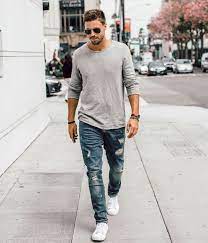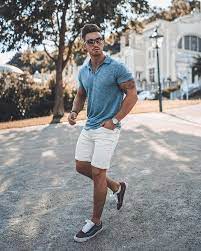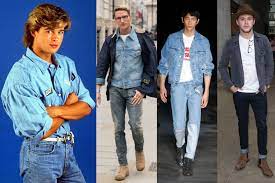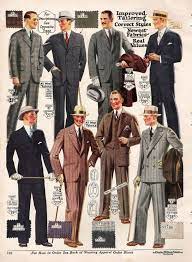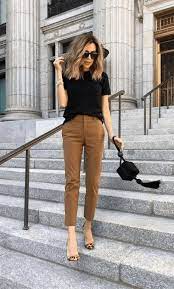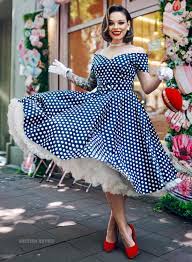Dapper and Warm: Unveiling the Secrets of Men’s Winter Fashion
Winter is the perfect season for men to showcase their style and stay warm at the same time. With dropping temperatures and chilly winds, it’s essential to curate a wardrobe that not only keeps you cosy but also reflects your personal fashion sense. From layering techniques to incorporating seasonal trends, here’s a guide to men’s winter fashion that will have you looking effortlessly stylish throughout the colder months.
Layering is key when it comes to dressing for winter. Start with a solid foundation by investing in quality basics like thermal undershirts and long-sleeved t-shirts. These will provide an extra layer of warmth without adding bulk to your outfit. On top of this, opt for a stylish sweater or cardigan made from materials like wool or cashmere. Not only do they provide insulation, but they also add texture and depth to your ensemble.
Outerwear is an essential component of any winter wardrobe. A classic wool coat or a tailored pea coat is a timeless choice that exudes sophistication and keeps you snug during frosty days. For more casual occasions, consider a versatile parka or a quilted jacket with insulation for added warmth. Don’t be afraid to experiment with different colours and patterns – bold hues or subtle checks can add personality to your overall look.
Accessories play a crucial role in completing your winter outfit while providing functional benefits. A stylish scarf not only adds flair but also protects your neck from the biting cold winds. Opt for materials like cashmere or wool for both comfort and style. Additionally, invest in a good pair of leather gloves or mittens to keep your hands warm while adding elegance to your attire.
Footwear choices are equally important during winter months. Swap out lightweight sneakers for sturdy boots that offer both insulation and traction on slippery surfaces. Look for waterproof options that can withstand rain, snow, and slush without compromising on style.
When it comes to colours, embrace the rich tones of winter such as deep blues, earthy browns, and charcoal greys. These hues not only complement the season but also provide a sophisticated and timeless aesthetic. However, don’t be afraid to add pops of colour through accessories or statement pieces to liven up your look.
Lastly, pay attention to the fabrics you choose. Opt for natural materials like wool, cashmere, and tweed as they provide superior insulation and breathability. Avoid synthetic materials that may trap moisture or cause discomfort.
Remember, winter fashion is all about finding the perfect balance between style and functionality. By layering smartly, investing in quality outerwear and accessories, and choosing appropriate footwear, you can effortlessly navigate the colder months while looking your best. So embrace the season with confidence and showcase your unique winter style wherever you go.
7 Pros of Men’s Winter Fashion: Embrace Style, Warmth, and Durability
- Variety of colours and styles – Mens winter fashion offers a wide range of colours and styles to choose from, allowing you to express yourself through your wardrobe.
- Layering – With the colder weather comes the opportunity to layer up with stylish jumpers, scarves and coats.
- Quality materials – Winter clothes are often made from high-quality fabrics such as wool, cashmere or leather which offer greater protection from the cold weather elements.
- Accessories – Mens winter fashion also provides an array of accessories such as hats, gloves and scarves that can help you stay warm while still looking fashionable.
- Footwear – Investing in a good pair of boots is essential for keeping your feet warm during the winter months, whilst also completing any outfit perfectly!
- Comfort & warmth – Not only does mens winter fashion look great but it also provides comfort and warmth against the cold weather conditions outside!
- Durability – Winter clothing is designed to last longer than other seasonal clothing due to its durable materials and construction methods used during production
Challenges in Men’s Winter Fashion: Cost, Bulkiness, Limited Colour Options, and Suitability for Milder Weather
- Costly – Winter clothing can be more expensive than summer clothing due to the heavier materials used.
- Bulkier – Layering up in winter can sometimes make an outfit look bulky and uncomfortable.
- Limited Colour Palette – Men’s winter fashion is usually limited to darker colours, meaning there is less choice when it comes to brightening up an outfit.
- Unsuitable for Milder Weather – If the weather isn’t cold enough, then men’s winter fashion can be too warm and uncomfortable for the conditions.
Variety of colours and styles – Mens winter fashion offers a wide range of colours and styles to choose from, allowing you to express yourself through your wardrobe.
When it comes to men’s winter fashion, one of the standout advantages is the incredible variety of colours and styles available. Winter is no longer limited to dull and monotonous hues; instead, it offers an exciting array of options that allow you to express your unique personality through your wardrobe.
Gone are the days when winter fashion was solely about dark and muted tones. Nowadays, you can find a plethora of vibrant colours that inject life into your outfits during the colder months. From rich burgundies and deep blues to earthy greens and bold oranges, there’s a shade for every taste and preference. These vibrant colours can instantly uplift your mood and make a statement wherever you go.
In addition to the diverse colour palette, men’s winter fashion also offers an extensive range of styles to choose from. Whether you prefer classic and timeless pieces or contemporary and trendsetting designs, there’s something for everyone. From tailored coats with clean lines to rugged leather jackets, from chunky knitwear to sleek turtlenecks, the options are endless.
This variety allows you to experiment with different looks and create outfits that truly reflect your personal style. Whether you lean towards a sophisticated aesthetic or prefer a more casual approach, there are endless possibilities for creating unique combinations that suit your taste.
Moreover, this wide range of colours and styles ensures that men can find clothing that suits their body type, skin tone, and overall preferences. This inclusivity in winter fashion means that every man can feel confident in his choices while embracing his individuality.
So why settle for dull and uninspiring winter attire when you can explore a world of vibrant colours and diverse styles? Embrace the freedom of expression offered by men’s winter fashion, experiment with different combinations, and let your wardrobe be a reflection of who you are. With such an extensive range at your fingertips, there’s no limit to how stylishly you can conquer the colder months ahead.
Layering – With the colder weather comes the opportunity to layer up with stylish jumpers, scarves and coats.
Layering – With the colder weather comes the opportunity to layer up with stylish jumpers, scarves, and coats. One of the biggest pros of men’s winter fashion is the ability to create visually appealing outfits by combining different layers.
Layering not only adds depth and texture to your look but also provides practical benefits. By wearing multiple layers, you can adapt your clothing to changing temperatures throughout the day. You can easily remove or add a layer depending on whether you’re indoors or outdoors, ensuring that you stay comfortable at all times.
When it comes to jumpers, there are numerous options available. From classic crew necks to trendy roll necks, you can choose a style that suits your personal taste. Pair them with shirts for a smart-casual look or wear them over t-shirts for a more relaxed vibe. Experiment with different colours and patterns to add interest and personality to your ensemble.
Scarves are not just accessories; they serve a functional purpose too. They provide an extra layer of warmth around your neck and can be styled in various ways to complement your outfit. Whether you opt for a classic wool scarf or a trendy oversized one, it’s an opportunity to showcase your individual style while keeping cosy.
Coats are an essential part of winter fashion, and layering allows you to experiment with different styles and materials. From tailored wool coats to puffer jackets, there are plenty of options available depending on the occasion and personal preference. Layering coats over sweaters or blazers adds sophistication and warmth while creating a polished look.
Layering in men’s winter fashion is not only practical but also allows for versatility in styling. You can mix and match different pieces from your wardrobe, creating unique combinations each time. This gives you the freedom to express yourself creatively while staying warm during the colder months.
So embrace the art of layering this winter season – experiment with different textures, colours, and patterns. Don’t be afraid to mix and match various garments to create stylish and functional outfits. Layering is a pro of men’s winter fashion that allows you to stay warm, look fashionable, and adapt to changing weather conditions effortlessly.
Quality materials – Winter clothes are often made from high-quality fabrics such as wool, cashmere or leather which offer greater protection from the cold weather elements.
One of the undeniable pros of men’s winter fashion is the use of quality materials in crafting winter garments. When it comes to facing the cold weather elements, nothing beats the warmth and protection provided by fabrics like wool, cashmere, and leather.
Wool is a natural insulator that effectively traps heat and keeps you warm even in freezing temperatures. It has excellent moisture-wicking properties, meaning it can absorb sweat without feeling damp or uncomfortable. Additionally, wool is known for its durability, ensuring that your winter clothing will last for years to come.
Cashmere, on the other hand, is a luxurious material that offers unparalleled softness and comfort. It provides exceptional insulation while being lightweight and breathable. Cashmere garments are not only warm but also exude an air of sophistication and elegance.
Leather is another top choice for winter fashion due to its durability and ability to shield against harsh weather conditions. Leather jackets or coats are not only stylish but also offer excellent wind resistance, keeping you protected from chilly gusts. With proper care, leather pieces can last a lifetime, making them a worthy investment.
The use of these high-quality materials in men’s winter fashion ensures that you stay warm and comfortable without sacrificing style. They provide superior insulation against the cold weather elements while allowing your skin to breathe. Moreover, their durability ensures that your winter wardrobe will withstand multiple seasons.
In addition to their functional benefits, these fabrics also add a touch of luxury and sophistication to your overall look. The texture and richness they bring elevate any outfit, making you stand out with timeless elegance.
When it comes to men’s winter fashion, opting for garments made from quality materials like wool, cashmere, or leather is a wise choice. Not only do they offer superior protection from the cold weather elements but they also provide long-lasting durability and an elevated sense of style. So embrace the comfort and luxury of these fabrics as you step out confidently into the winter season.
Accessories – Mens winter fashion also provides an array of accessories such as hats, gloves and scarves that can help you stay warm while still looking fashionable.
Accessories – a key pro of men’s winter fashion. When the colder months roll in, it’s not just about staying warm; it’s also an opportunity to elevate your style with a range of accessories. From hats and gloves to scarves, these winter essentials not only provide essential warmth but also add a touch of sophistication to any outfit.
A stylish hat is not only practical but can also be a statement piece. Whether you opt for a classic beanie, a sleek fedora, or a trendy trapper hat, there are plenty of options to suit your personal style. Not only do hats help keep your head warm, but they also add an element of flair and individuality to your overall look.
Gloves are another must-have accessory during the winter season. They not only protect your hands from the biting cold but also add a touch of elegance to your outfit. Opt for leather gloves for a timeless and sophisticated look or explore other materials like wool or cashmere for added warmth and comfort.
Scarves are versatile accessories that can instantly elevate any winter ensemble. Whether you prefer chunky knits, classic woollen scarves, or luxurious cashmere wraps, they provide an extra layer of insulation while adding texture and visual interest to your outfit. Experiment with different colours, patterns, and styles to create unique combinations that reflect your personal taste.
These accessories not only serve their practical purpose but also allow you to express your individual style during the winter season. They can effortlessly transform even the simplest outfit into something more refined and put-together.
So embrace the power of accessories in men’s winter fashion – hats, gloves, and scarves are not just functional items but essential tools for expressing your personality while keeping warm. Don’t be afraid to experiment with different styles and materials; let them become an extension of your personal style this winter season.
Footwear – Investing in a good pair of boots is essential for keeping your feet warm during the winter months, whilst also completing any outfit perfectly!
When it comes to men’s winter fashion, one pro that stands out is the importance of footwear. Investing in a good pair of boots is not only practical but also adds the perfect finishing touch to any outfit.
During the colder months, keeping your feet warm and protected becomes a top priority. Boots offer the ideal solution by providing insulation and shielding your feet from chilly temperatures, rain, snow, and icy conditions. With their sturdy construction and durable materials, they are designed to withstand the harsh elements of winter.
But functionality doesn’t mean compromising on style. Boots come in a variety of designs, allowing you to find the perfect pair that complements your personal taste and completes your winter ensemble. From classic leather boots to rugged hiking-inspired options or sleek Chelsea boots, there is a style for every occasion and preference.
The versatility of boots is another advantage worth mentioning. They can effortlessly transition from casual to formal settings, making them suitable for various occasions. Pair them with jeans or chinos for a relaxed yet stylish look or wear them with tailored trousers for a more polished appearance.
Furthermore, investing in quality boots ensures longevity and durability. By choosing well-constructed footwear made from premium materials, you can enjoy their benefits season after season. Proper care and maintenance will extend their lifespan even further.
In conclusion, when it comes to men’s winter fashion, footwear plays a vital role in both practicality and style. Investing in a good pair of boots not only keeps your feet warm and protected but also adds an element of sophistication to your overall look. So don’t overlook this essential aspect of winter dressing – embrace the comfort and elegance that quality boots bring to any outfit!
Comfort & warmth – Not only does mens winter fashion look great but it also provides comfort and warmth against the cold weather conditions outside!
When it comes to men’s winter fashion, there is one undeniable pro that stands out: comfort and warmth. As the temperature drops and the icy winds start to blow, it becomes essential to prioritize clothing that not only looks stylish but also keeps you cosy and comfortable.
Winter fashion for men offers a wide range of options designed specifically to combat the cold weather conditions outside. From insulated jackets and coats to chunky knitwear, these garments are crafted with materials that provide excellent insulation and retain body heat. This means you can step out confidently, knowing that you are shielded from the biting cold.
Layering is a key technique in winter fashion, allowing you to adjust your outfit according to fluctuating temperatures. By layering thermal undershirts, long-sleeved tops, sweaters, and coats, you can create a barrier against the chill while still maintaining flexibility in your clothing choices.
The comfort factor extends beyond just warmth. Men’s winter fashion takes into account the need for ease of movement and functionality. Many winter garments are designed with practical features such as adjustable cuffs, multiple pockets for storage, and hoods or high collars for added protection against harsh weather conditions. These thoughtful details ensure that you can navigate through your day without feeling restricted or uncomfortable.
Moreover, the use of soft and luxurious fabrics like wool, cashmere, and fleece adds an extra level of comfort to winter attire. These materials not only provide warmth but also feel incredibly soft against the skin, making them a joy to wear throughout the season.
So whether you’re heading out for a casual stroll or attending a formal event during winter months, mens winter fashion has got you covered in terms of both style and functionality. With its focus on comfort and warmth, you can confidently embrace the cold weather while looking effortlessly fashionable.
Durability – Winter clothing is designed to last longer than other seasonal clothing due to its durable materials and construction methods used during production
When it comes to men’s winter fashion, one undeniable advantage is durability. Winter clothing is specifically designed to withstand the harsh weather conditions and last longer than other seasonal garments. This longevity is achieved through the use of durable materials and meticulous construction methods during production.
Winter clothing often incorporates robust fabrics such as wool, cashmere, and heavy-duty cotton. These materials are known for their ability to provide excellent insulation and withstand wear and tear. Wool, in particular, is a popular choice due to its natural resilience and ability to retain warmth even when wet.
Furthermore, winter garments are crafted with reinforced stitching and sturdy closures to ensure they can withstand the rigors of cold weather. From reinforced buttons on coats to double-stitched seams on sweaters, these construction techniques enhance the overall durability of winter clothing.
The durability of winter fashion extends beyond its ability to withstand the elements. The timeless designs and classic styles associated with winter clothing make it less susceptible to trends that come and go. Investing in well-made winter pieces means you can enjoy them for years without worrying about them going out of style.
Another aspect that contributes to the durability of men’s winter fashion is its versatility. Many winter garments are designed with layering in mind, allowing you to mix and match various pieces throughout different seasons. This adaptability ensures that your investment in quality winter clothing pays off year after year.
In conclusion, durability is a significant advantage when it comes to men’s winter fashion. The use of durable materials, meticulous construction methods, timeless designs, and versatile layering options make winter clothing a reliable choice for long-lasting style. So embrace the durability of your winter wardrobe and enjoy both its functionality and enduring appeal season after season.
Costly – Winter clothing can be more expensive than summer clothing due to the heavier materials used.
When it comes to men’s winter fashion, there is one con that often comes to mind: the cost. Winter clothing tends to be pricier compared to summer clothing, and there’s a good reason for it. The heavier materials used in winter garments, such as wool, cashmere, and down, come with a higher price tag.
The need for insulation and warmth during colder months means that manufacturers have to invest in quality fabrics that can effectively protect against the elements. These materials not only provide comfort but also ensure durability and longevity of the garments. This attention to detail and craftsmanship comes at a cost.
Additionally, the production process of winter clothing requires more intricate techniques and specialized machinery. From weaving thick fabrics to adding insulation layers, each step demands extra care and expertise. This level of craftsmanship often translates into higher prices for consumers.
However, it’s important to note that investing in quality winter clothing can be a wise decision in the long run. Well-made pieces tend to last longer and retain their shape and functionality over time. By choosing durable items, you can avoid frequent replacements or repairs, ultimately saving money in the long term.
Moreover, it’s worth considering that winter fashion trends tend to be more timeless compared to seasonal summer styles. Classic designs like wool coats or cashmere sweaters are versatile pieces that can be worn year after year without going out of style. By investing in these staple items, you can build a wardrobe that stands the test of time.
While the initial cost of men’s winter fashion may seem daunting, it is important to weigh it against the benefits of quality materials, durability, and timeless style. Consider your needs and budget carefully when making purchasing decisions. With proper care and maintenance, your winter wardrobe can serve you well for many seasons ahead.
Bulkier – Layering up in winter can sometimes make an outfit look bulky and uncomfortable.
While winter fashion offers plenty of opportunities to showcase your style, one common con that many men face is the potential for bulkier outfits. Layering up during colder months can sometimes result in an outfit that looks and feels uncomfortable. However, with a few tips and tricks, you can overcome this challenge and achieve a stylish and comfortable winter look.
The key to avoiding the bulkiness associated with layering is to focus on smart layering techniques. Instead of piling on multiple thick layers, opt for thinner garments that still provide insulation. For example, start with a lightweight thermal undershirt or a long-sleeved base layer made from moisture-wicking materials. These will keep you warm without adding unnecessary bulk.
Another tip is to choose well-fitted clothing items. Avoid oversized sweaters or jackets that add unnecessary volume. Instead, opt for slim-fit or tailored options that flatter your body shape while still allowing room for layering underneath. This way, you can maintain a streamlined silhouette even when wearing multiple layers.
Additionally, consider the fabrics you choose for your winter wardrobe. Opt for materials like merino wool or cashmere as they are known for their warmth-to-weight ratio. These fabrics provide excellent insulation without adding excessive bulk to your outfit.
When it comes to outerwear, select styles that are designed with streamlined cuts and minimal details. A well-tailored wool coat or a sleek parka can keep you warm while maintaining a sophisticated look without overwhelming your frame.
Accessorizing thoughtfully can also help minimize the appearance of bulkiness. Choose scarves that are lightweight yet warm, allowing you to wrap them around your neck without adding too much extra volume. Look for gloves or mittens made from thin but insulating materials like leather or fleece.
Lastly, don’t forget about proportion and balance in your overall outfit composition. Pair bulkier items like chunky knit sweaters with slimmer trousers or jeans to create visual contrast. This will help create a more balanced look, preventing the outfit from appearing overly bulky.
While it’s true that layering in winter can sometimes result in a bulkier appearance, with the right approach, you can overcome this challenge and achieve a stylish and comfortable winter outfit. By focusing on smart layering techniques, well-fitted clothing items, appropriate fabrics, and thoughtful accessorizing, you can strike the perfect balance between warmth and style without sacrificing comfort or aesthetics.
Limited Colour Palette – Men’s winter fashion is usually limited to darker colours, meaning there is less choice when it comes to brightening up an outfit.
One con of men’s winter fashion is the limited colour palette typically associated with the season. As the temperature drops and the days become shorter, many men tend to gravitate towards darker shades such as blacks, greys, and deep blues. While these colours exude a sense of sophistication and elegance, they can sometimes make it challenging to inject vibrancy and personality into winter outfits.
The lack of variety in colours can be seen as a drawback for those who enjoy experimenting with different shades and want to brighten up their winter wardrobe. It can feel restrictive when trying to create visually striking ensembles or express individuality through clothing choices.
However, it’s important to note that this limitation doesn’t mean men have no options for adding pops of colour to their winter outfits. There are still ways to incorporate vibrant elements while staying true to the season’s aesthetic. Accessories such as scarves, gloves, and hats offer opportunities to introduce bold hues or patterns that can instantly uplift an outfit.
Additionally, consider incorporating colourful accents through layering techniques. Pairing a bright sweater or shirt underneath a neutral-toned coat or jacket can create an eye-catching contrast while keeping you warm and stylish.
Another alternative is to explore different textures and fabric finishes within the limited colour range. Experimenting with materials like tweed, herringbone, or cable-knit wool can add depth and visual interest without relying solely on colours.
Lastly, don’t underestimate the power of footwear in adding a touch of excitement to your winter look. Opt for boots in unique shades like burgundy or forest green that can serve as statement pieces while still complementing the overall seasonal vibe.
While it may be true that men’s winter fashion tends towards darker hues, there are still ways to inject personality and brightness into your outfits. By strategically incorporating pops of colour through accessories, layering techniques, texture variations, or statement footwear choices, you can overcome the limitation of a limited colour palette and create visually captivating ensembles that stand out in the winter crowd.
Unsuitable for Milder Weather – If the weather isn’t cold enough, then men’s winter fashion can be too warm and uncomfortable for the conditions.
While men’s winter fashion offers a plethora of stylish options to keep you warm and cosy during chilly temperatures, it does come with a con – it may not be suitable for milder weather. When the temperature isn’t cold enough, wearing heavy winter garments can leave you feeling uncomfortably warm and sweaty.
One of the challenges of dressing for milder winter conditions is finding the right balance between staying comfortable and maintaining a fashionable look. Wearing thick layers or heavy coats designed for colder climates can quickly become overwhelming when the temperature rises unexpectedly.
To overcome this challenge, it’s important to have a versatile wardrobe that includes pieces suitable for varying weather conditions. Invest in lightweight jackets or transitional coats that provide some insulation without causing overheating. Opt for breathable fabrics like cotton or blends that allow air circulation and prevent excessive sweating.
Layering is also key in adapting your outfit to changing temperatures. Instead of relying solely on thick sweaters or thermals, consider layering lighter pieces such as long-sleeved shirts or thin knits under a jacket. This way, you can easily adjust your clothing throughout the day by removing or adding layers as needed.
Another option is to explore seasonal fabrics that are specifically designed for milder winters. Look for garments made from materials like merino wool, which offer warmth without excessive weight, making them suitable for transitioning between cooler and warmer temperatures.
Accessorizing strategically can also help manage comfort levels in milder weather. Instead of heavy scarves or chunky gloves, opt for lightweight alternatives such as silk scarves or fingerless gloves that provide a touch of warmth without being too stifling.
Ultimately, adapting men’s winter fashion to milder weather requires careful consideration of materials, layering techniques, and accessory choices. By selecting versatile pieces and being mindful of comfort levels, you can maintain your style while ensuring you feel comfortable regardless of the fluctuating temperatures outside.


